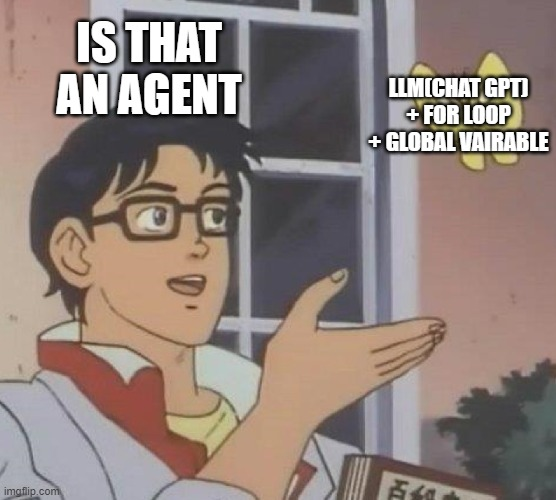Alright, But How the Hell Can We Find(Evaluate) A good Agent?
What Makes a "Good Agent"? Evaluating Agents in the Era of LLM-Based RAG Systems

The rise of Large Language Model (LLM)-powered Retrieval-Augmented Generation (RAG) has led to an explosion of projects and services claiming to integrate "agents" into their systems. From task automation to advanced decision-making, these agents are reshaping industries. However, amid the wave of hype, a critical question emerges: What constitutes a good agent? As the AI community navigates this flood of agent-based solutions, it’s imperative to establish robust evaluation methods to differentiate effective agents from underperforming ones. This article explores how to evaluate agents using methods like "G-Eval" and "Hallucination + RAG Evaluation" and why this is critical for the future of agent-based systems.
The Current Challenge: Defining a Good Agent
An agent in the context of LLM-based RAG systems typically performs tasks by combining reasoning, retrieval, and interaction capabilities. However, the effectiveness of these agents varies widely due to:
- Ambiguous Standards: There is no universally agreed-upon metric for evaluating an agent’s performance.
- Complexity of Multi-Step Tasks: Many agents fail to maintain contextual accuracy across multi-turn or complex interactions.
- Hallucinations: Agents often generate factually incorrect or irrelevant responses, undermining trust and utility.
- Domain-Specific Demands: Agents must adapt to the nuances of specific fields, such as healthcare, finance, or Web3.
Without rigorous evaluation frameworks, it’s challenging to identify and improve truly effective agents.
Our Approach: Evaluating Agents with Proven Methodologies
To address this challenge, we propose two key evaluation methods: G-Eval and Hallucination + RAG Evaluation. These frameworks are designed to holistically assess an agent’s capabilities, performance, and reliability.
1. G-Eval: A Generalized Agent Evaluation Framework
G-Eval focuses on evaluating agents across diverse dimensions, ensuring comprehensive performance metrics. This framework incorporates:
Key Metrics:
- Task Completion Rate: Measures how effectively the agent completes assigned tasks.
- Contextual Consistency: Assesses the agent’s ability to maintain coherent and contextually relevant responses across multi-turn interactions.
- Adaptability: Evaluates how well the agent handles diverse domains and evolving user inputs.
- Efficiency: Tracks response times and resource utilization.
Implementation:
- Scenario-Based Testing: Design task scenarios that mirror real-world use cases, such as answering user queries, summarizing documents, or processing multi-modal inputs.
- Multi-Dimensional Scoring: Rate the agent on a scale for each metric, aggregating results to determine overall performance.
Example:
For a Web3-based agent, G-Eval could involve tasks like explaining staking mechanisms, retrieving DAO proposals, and guiding wallet setup—each scored on task completion, response relevance, and user satisfaction.
2. Hallucination + RAG Evaluation
Hallucination—the phenomenon of AI generating factually incorrect or irrelevant responses—remains a significant challenge for agents. Combining hallucination analysis with RAG evaluation provides a focused lens for assessing agent reliability.
Key Components:
- Hallucination Detection:
- Compare the agent’s responses against a ground-truth dataset (Khayrallah et al., 2020).
- Identify instances where the agent fabricates information or misrepresents retrieved data.
- RAG-Specific Metrics:
- Retrieval Accuracy: Measures the precision of documents retrieved by the RAG system (Lewis et al., 2020).
- Generation Quality: Assesses how well the retrieved data is incorporated into the agent’s responses (Izacard & Grave, 2021).
- Error Propagation Analysis: Evaluates how retrieval errors affect the final output (Liu et al., 2021).
Implementation:
- Synthetic Testing:
- Introduce intentionally challenging queries to test the agent’s limits.
- Real-World Scenarios:
- Monitor hallucination rates during live interactions.
- Feedback Loops:
- Incorporate user feedback and automated validation mechanisms to iteratively reduce hallucination rates.
Example:
An agent tasked with providing cryptocurrency prices might hallucinate trends without accessing real-time data. This method identifies such errors and assesses how effectively the agent integrates accurate data from RAG systems.
Comparative Analysis: G-Eval vs. Hallucination + RAG Evaluation
| Evaluation Aspect | G-Eval | Hallucination + RAG Evaluation |
|---|---|---|
| Scope | Broad; covers overall agent performance | Focused; targets factual accuracy |
| Metrics | Task completion, consistency, adaptability | Retrieval accuracy, hallucination rate |
| Use Cases | General-purpose agent evaluation | High-stakes or domain-specific tasks |
| Example Domains | Web3, customer support, e-commerce | Healthcare, finance, technical support |
Why Agent Evaluation Matters
Robust agent evaluation is critical for:
- Building Trust: Users rely on agents for accurate and reliable information. Evaluation ensures accountability and reduces risks.
- Continuous Improvement: Feedback from evaluation methods drives iterative enhancements in agent design and functionality.
- Domain-Specific Excellence: Tailored evaluation frameworks enable agents to excel in specialized fields, meeting specific user needs.
- Scalability: Effective evaluation paves the way for deploying high-quality agents at scale across diverse industries.
The Road Ahead: Towards Better Agents
As the field of LLM-based RAG systems continues to grow, defining and evaluating "good agents" will remain a critical challenge. By adopting methodologies like G-Eval and Hallucination + RAG Evaluation, we can:
- Set industry benchmarks for agent performance.
- Enhance user experiences through more reliable and accurate agents.
- Foster innovation by identifying and addressing weaknesses in current systems.
Our ongoing efforts aim to refine these frameworks, ensuring they adapt to emerging technologies and evolving user expectations. In a world awash with agents, it’s time to set the gold standard for what makes an agent truly exceptional.
References
- Khayrallah, H. et al. (2020): "Detecting Hallucinated Content in Neural Machine Translation."
- Lewis, P. et al. (2020): "Retrieval-Augmented Generation for Knowledge-Intensive NLP Tasks." Link
- Izacard, G. & Grave, E. (2021): "Leveraging Passage Retrieval with Generative Models." Link
- Liu, J. et al. (2021): "Probing Error Propagation in Retrieval-Augmented Models." Link
- Milvus Documentation: "Hybrid Search and Multi-Modal Database Features." Link